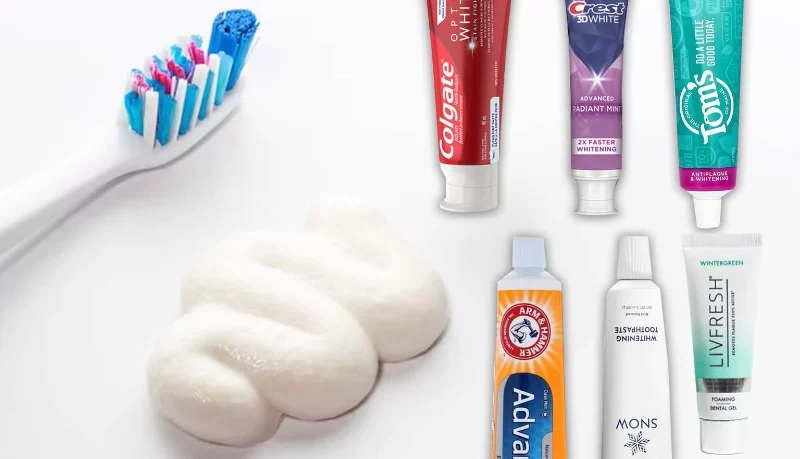
Best Toothpaste for Whitening Sensitive Teeth: A Complete Guide
When it comes to maintaining a bright smile while managing the discomfort of sensitive teeth, finding the right toothpaste is key. Many people struggle with sensitive teeth, especially when trying to whiten their teeth. The good news is that there are effective whitening toothpastes designed specifically for people with sensitive teeth. In this guide, we’ll explore the best options for whitening toothpaste, tips on treating sensitive teeth, and how to maintain both healthy and radiant teeth.
1. Understanding Sensitive Teeth
Sensitive teeth occur when the enamel, which protects the teeth, becomes worn down or when gums recede, exposing the dentin underneath. The dentin contains tiny tubules that connect to the nerves of the tooth, which can cause pain when exposed to hot, cold, or sweet foods and drinks. While sensitivity can make dental hygiene difficult, the right toothpaste can help minimize discomfort and even contribute to whitening your smile.
1.1 Common Causes of Tooth Sensitivity
Several factors contribute to tooth sensitivity, including:
- Enamel Erosion: Over time, the enamel on teeth can wear away due to excessive brushing, acidic foods, or grinding your teeth.
- Gum Recession: If your gums recede, the sensitive root surface becomes exposed, leading to discomfort.
- Teeth Whitening Treatments: Many over-the-counter whitening products can cause temporary sensitivity due to the chemicals they use.
- Tooth Decay: Cavities or cracks in teeth can also cause sensitivity.
2. How to Choose the Best Toothpaste for Whitening Sensitive Teeth
When choosing a whitening toothpaste for sensitive teeth, it’s important to find one that balances whitening power with a gentle formula. Here are the features to look for:
2.1 Key Ingredients to Look For
Toothpaste for sensitive teeth should include the following ingredients to ensure both effective whitening and protection:
- Potassium Nitrate: Helps reduce nerve sensitivity by calming the nerves inside the teeth.
- Fluoride: Fluoride strengthens the enamel and can help protect against decay while also contributing to whitening.
- Whitening Agents: Look for mild, non-abrasive whitening agents like hydrated silica, which will remove stains without damaging sensitive teeth.
- Desensitizing Agents: Ingredients like strontium chloride and calcium carbonate help block the transmission of pain signals from the tooth surface to the nerve.
2.2 The Role of Enamel Protection
Whitening toothpastes for sensitive teeth should gently remove surface stains without further wearing down the enamel. This is critical because weakened enamel can exacerbate tooth sensitivity. Toothpastes that are too abrasive can cause long-term damage, so choosing one with a low abrasivity level is essential for maintaining both whitening results and oral health.
3. Top Picks: Best Toothpastes for Whitening Sensitive Teeth
Here are some of the best whitening toothpaste options designed specifically for people with sensitive teeth:
3.1 Sensodyne Pronamel Gentle Whitening
As one of the leading toothpaste brands for sensitive teeth, Sensodyne Pronamel is formulated to gently clean and protect enamel while whitening your smile. Its unique formula is designed to be gentle yet effective, making it a top choice for those with sensitive teeth.
3.2 Colgate Sensitive Whitening Toothpaste
Colgate’s Sensitive Whitening Toothpaste offers a great combination of desensitizing agents and whitening ingredients. It helps relieve tooth sensitivity while providing a whitening effect to help remove surface stains.
3.3 Crest 3D White Sensitivity Care
Crest’s 3D White Sensitivity Care toothpaste is another excellent option. It targets stains while also soothing sensitive teeth. This toothpaste features fluoride to help protect against cavities and strengthen enamel while delivering a brighter smile.
3.4 Tom’s of Maine Natural Sensitive Whitening Toothpaste
If you prefer a more natural option, Tom’s of Maine offers a fluoride-free sensitive toothpaste that’s gentle on teeth and gums. This product includes natural whitening ingredients, such as silica, and helps protect against sensitivity without harsh chemicals.
4. Practical Tips for Managing Tooth Sensitivity While Whitening
While using the best toothpaste for whitening sensitive teeth is an important first step, there are additional practices you can follow to manage sensitivity and get the best results:
4.1 Brush Gently
Brushing your teeth with excessive force can exacerbate sensitivity. Use a soft-bristled toothbrush and brush gently to avoid damaging your enamel.
4.2 Avoid Hot or Cold Foods
If your teeth are sensitive, try to avoid consuming excessively hot or cold foods and beverages, as they can trigger discomfort. Opt for lukewarm or room-temperature foods instead.
4.3 Use a Desensitizing Gel or Mouthwash
If your sensitivity becomes severe, consider using a desensitizing gel or mouthwash. These products contain active ingredients that help numb the nerves in your teeth and reduce discomfort.
5. Real-Life Example: How Whitening Toothpaste Helped a Sensitive Smile
Sarah, a 38-year-old with sensitive teeth, had always struggled with tooth discoloration but was hesitant to try whitening products due to her sensitivity. After consulting her dentist, she decided to try Sensodyne Pronamel Gentle Whitening. Within a few weeks, Sarah noticed a brighter smile without any discomfort. By following a gentle brushing routine and maintaining her regular dental checkups, Sarah was able to achieve the smile she desired without compromising her oral health.
6. Conclusion
Whitening your teeth while managing sensitivity doesn’t have to be difficult. With the right toothpaste, you can enjoy a brighter smile without worrying about irritation or discomfort. Make sure to choose a whitening toothpaste specifically formulated for sensitive teeth, and incorporate proper oral care practices to get the best results. To explore more products that cater to your dental needs, visit Family Dentistry Online for trusted recommendations and tips for sensitive teeth care.







 Family Dentistry. Dr. Scott Brown DDS3.0 (105 review)
Family Dentistry. Dr. Scott Brown DDS3.0 (105 review) Jennifer Chiang, DDS5.0 (221 review)
Jennifer Chiang, DDS5.0 (221 review) Pinnacle Endodontics, Periodontics, and Implants4.0 (84 review)
Pinnacle Endodontics, Periodontics, and Implants4.0 (84 review) Pinnacle Peak Endodontics5.0 (2 review)
Pinnacle Peak Endodontics5.0 (2 review) North Atlanta Family Dentistry4.0 (482 review)
North Atlanta Family Dentistry4.0 (482 review) Olsen Orthodontics4.0 (77 review)
Olsen Orthodontics4.0 (77 review) The Importance of Oral Health Education During Pregnancy for a Healthy Pregnancy
The Importance of Oral Health Education During Pregnancy for a Healthy Pregnancy Best Tips for Brushing Your Teeth Properly for Healthy Gums: Essential Techniques for Oral Health
Best Tips for Brushing Your Teeth Properly for Healthy Gums: Essential Techniques for Oral Health Why Skipping Dental Checkups Can Lead to Bigger Oral Health Problems
Why Skipping Dental Checkups Can Lead to Bigger Oral Health Problems Advantages of Porcelain Dental Restorations
Advantages of Porcelain Dental Restorations How Can Diabetes Cause Tooth and Gum Problems? Preventing and Managing Oral Health Issues
How Can Diabetes Cause Tooth and Gum Problems? Preventing and Managing Oral Health Issues Healthy Habits for Promoting Good Oral Health and Hygiene: Tips for a Healthy Smile
Healthy Habits for Promoting Good Oral Health and Hygiene: Tips for a Healthy Smile